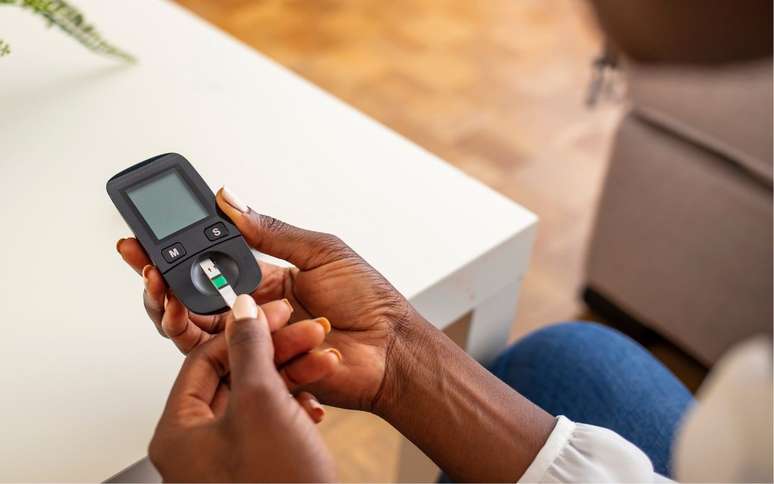Learn how to look for healthier alternatives to replace sugar in your diet
Sugar, being a common component in many people’s daily diets, plays a significant role in cooking and satisfying the taste buds. Present in a variety of foods and drinks, from sweets to processed products, its consumption is practically inevitable.
However, it is essential to recognize that too many sweets in the diet can pose serious health risks. Excessive consumption is associated with conditions such as obesity, type 2 diabetes, heart disease and other metabolic problems. Therefore it is important to eat in moderation or reduce consumption.
Therefore, below, check out 10 tips to reduce the consumption of sweets in your daily life. I wait!
1. Gradually reduce your consumption of sweets
To consume less sugar, you don’t need to radically change your diet. eating habits, just gradually reduce consumption. Try adding less sugar to your coffee or replacing milk chocolate with semi-sweet chocolate, as these strategies help tailor your tastes.
2. Eat every 3 hours
Choose to eat split meals, starting the day with a good breakfast. This will increase the body’s energy and prevent the need for sugar. Going a long time without eating can cause binge eating, and what would be just one slice of cake can become up to four.
“When someone needs energy, the body asks for sugar, which is the brain’s main source of energy. The brain has a reward system that, when activated, produces a feeling of pleasure. Sweets work as a kind of trigger for this system, “says nutritionist Mariana Ribeiro.
3. Make healthy substitutions
Opt for fresh or dried fruit when you feel like eating. eat candy. They offer natural sweetness and are healthier. “Most of the colors in our diet come from fruit, which offers vitamins and minerals not produced by the body, but which are essential for adequate nutrition and the correct functioning of the body,” explains nutritionist Gabriela Marcelino.
4. Keep your body hydrated
The human body, composed of 70% water, as it eliminates liquids through urine, feces, sweat, breathing and other means, needs it to balance the normal amount circulating in the body. When this doesn’t happen, dehydration can be confused with the desire to eat sweets. The recommendation is to drink at least 2 liters of water a day.

5. Read the labels of the products
Pay attention to food labels to identify the amount of sugar present. Many processed products contain added sugars under different names, such as corn syrup, maltodextrin and sucrose.
6. Consume foods rich in fiber
Fiber-rich foods, such as vegetables, whole grains and legumes, can help you feel full longer, reducing cravings for sweets. Furthermore, according to nutritionist Fernanda Sobral, they contribute to strengthening the immune system, “since they stimulate the growth of beneficial cells of the intestinal flora, preventing the growth of harmful microorganisms”.
7. Avoid processed foods and drinks
Industrialized foods and drinks, such as soft drinks and gummy bears, can increase sugar cravings and, consequently, the amount of glucose ingested per day. Try to limit consumption.
“What makes an ultra-processed food so cheap and so delicious? The countless additives used in its production; they are colorants, to generate stronger colors; sweeteners, to make it sweeter; emulsifiers, to give a more pleasant texture; essences, to give similar aromas to other foods, etc.”, explains Dr. Elodia Avila, plastic surgeon specializing in rejuvenation.
8. Eat nuts
Chestnuts, walnuts, almonds and cashews are rich in healthy fats, protein and fiber that help keep you feeling fuller longer. They also contain small amounts of natural sugar, providing a sweet, light flavor that can satisfy sugar cravings in a healthier way.
9. Avoid excess simple carbohydrates
Foods rich in carbohydrates Simple sugars and refined flours can cause rapid spikes in blood sugar levels followed by sudden drops, leading to cravings for more sweets. Choosing complex carbohydrates, such as whole grains, vegetables and legumes, helps keep glucose levels more stable.
10. Practice physical exercise
This stimulates the production of feel-good hormones, which provide the body with the same sensation as sweets. “During physical activity, endorphins are released, hormones linked to pleasure and happiness. This hormonal release can help improve mood, reduce stress and increase the overall feeling of well-being,” explains physical educator Lucas Meireles.
Source: Terra
Rose James is a Gossipify movie and series reviewer known for her in-depth analysis and unique perspective on the latest releases. With a background in film studies, she provides engaging and informative reviews, and keeps readers up to date with industry trends and emerging talents.








